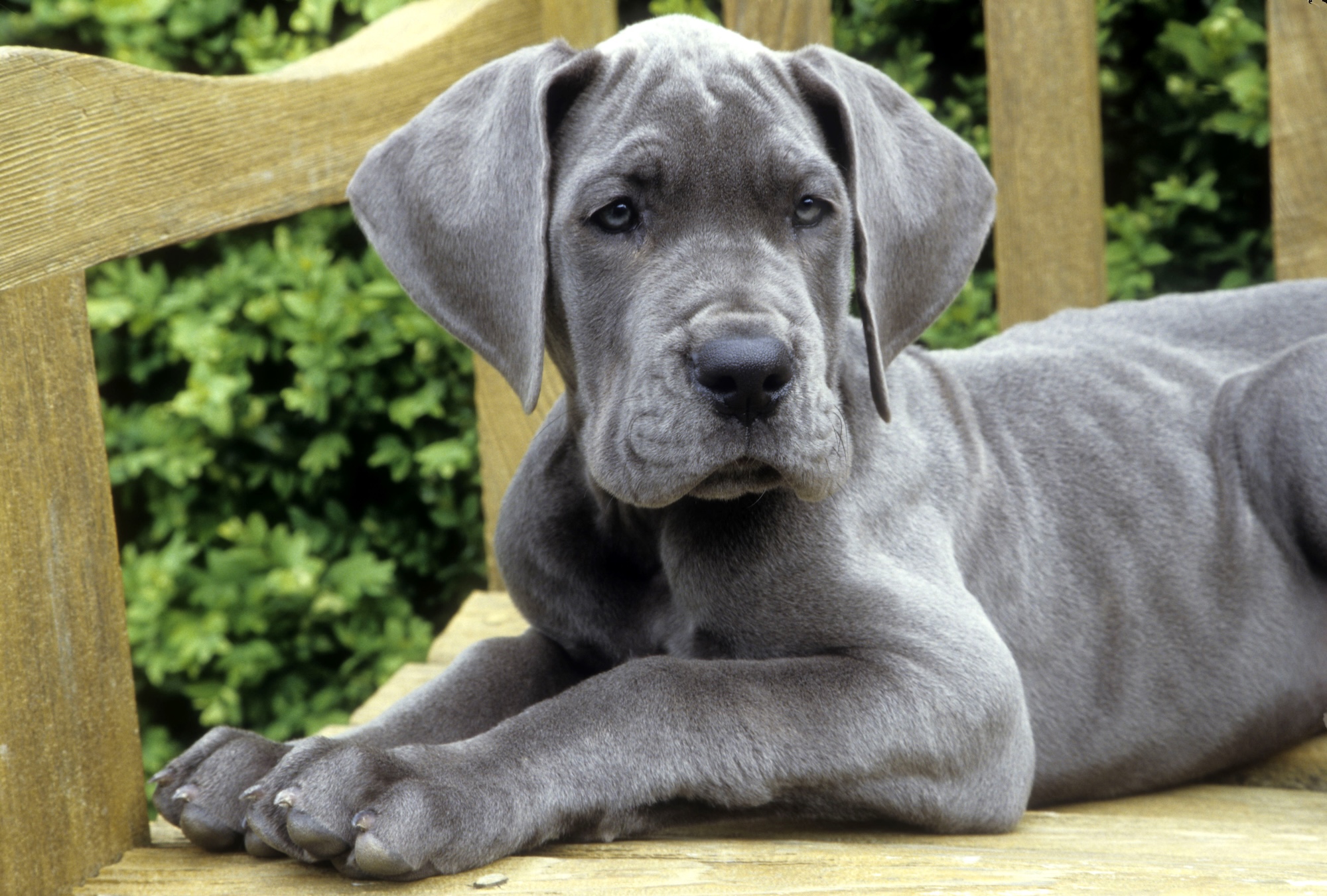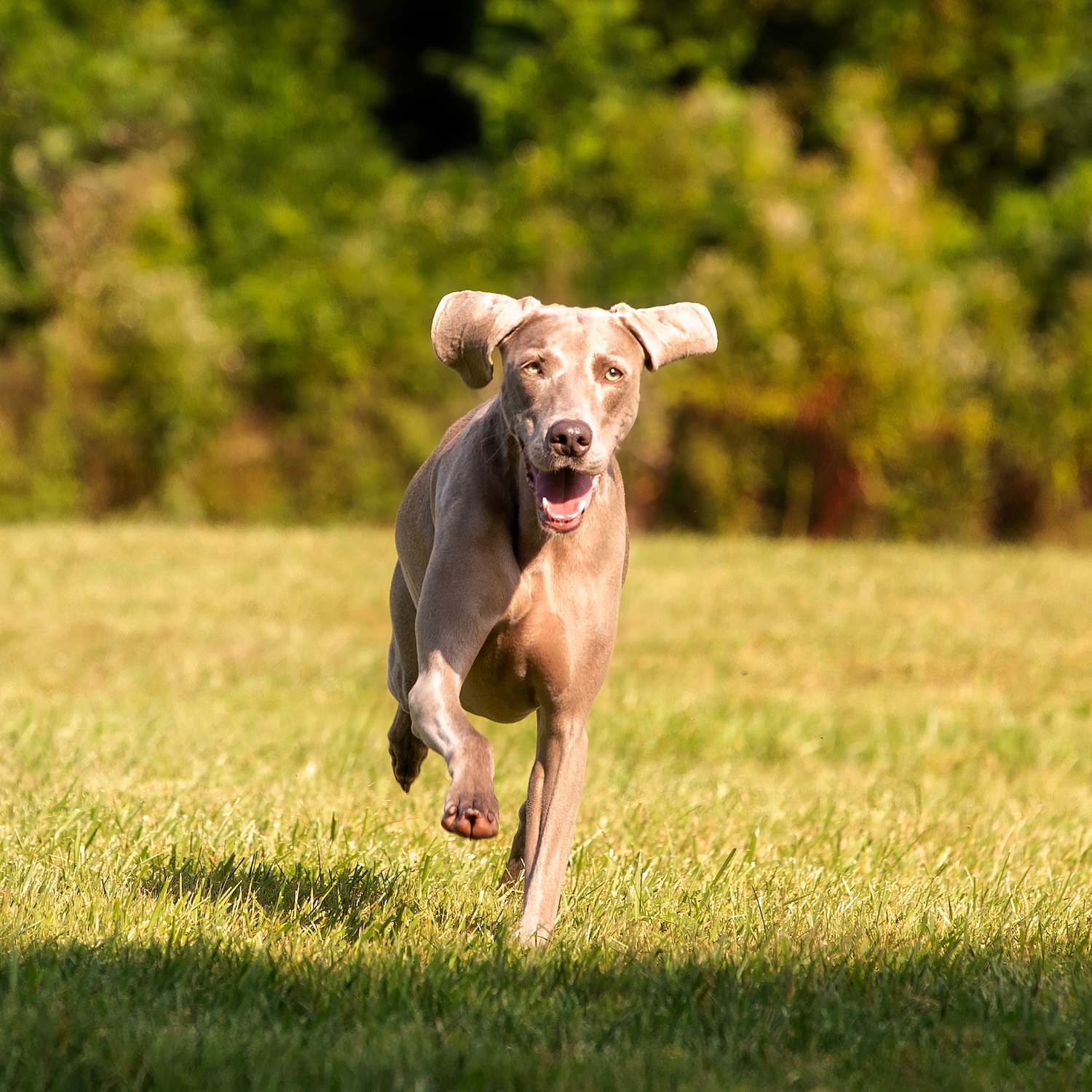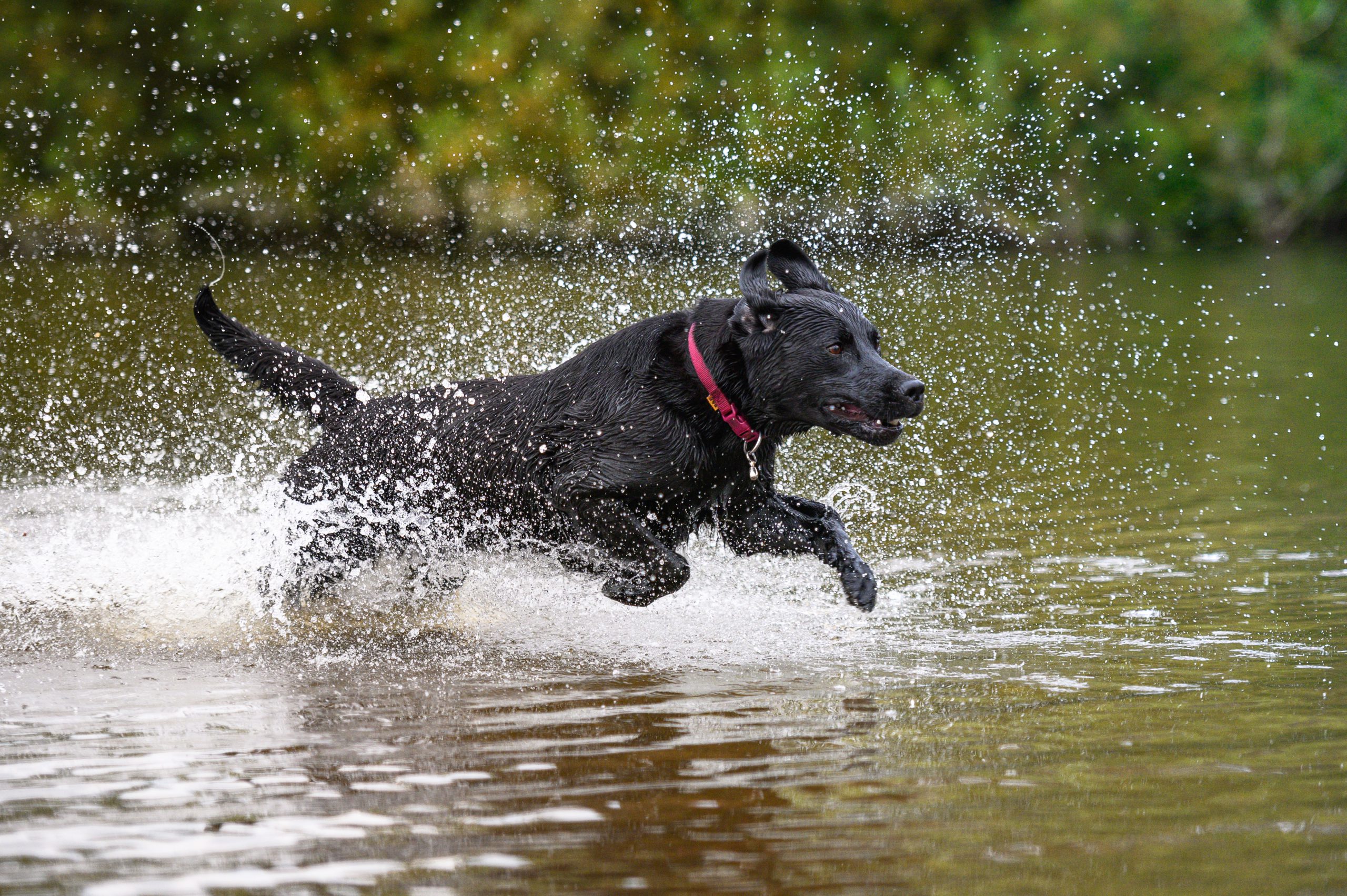Whether onscreen or in the White House, the German shepherd dog (GSD) is the canine equivalent of the class valedictorian and star jock rolled into one. The uber-popular breed is smart, athletic, hardworking, and no stranger to public service.
With all of that star power packed into one dog, you might expect that German shepherds also require a lot from their owners. And you’d be exactly right.
Here, go beyond the rugged good looks to discover what makes German shepherds so special, and how to live happily with this big canine energy.
German shepherd breed profile
Rin Tin Tin, the first canine film and TV star, captivated mid-century audiences with his bravery and charisma. “Rinty’s” real story was no less dramatic—he was rescued by an American soldier in Germany during WWI and brought to the U.S. (in addition to his on-screen feats, the handsome dog was said to have saved the movie studio Warner Bros from bankruptcy). The character also boosted the breed’s popularity—German shepherds have been among the top three most popular breeds in the United States for many years. GSDs have also shared the spotlight with Roy Rogers (Bullet the Wonder Dog), the Bionic Woman (Max the Bionic Dog), and Will Smith in I Am Legend.
In real life, German shepherds have been the quintessential police dog, working alongside authority figures both heroic and monstrous. The breed’s force for good was on display after September 11, 2001, as GSDs searched for survivors, and today they routinely sniff out explosives in public spaces. America’s first seeing-eye dog, Buddy, who went to work in 1928, was a German shepherd, as are President and first lady Biden’s dogs, Champ and Major, the latter being the first rescue dog to reside in the White House.
The breed’s high profile and popularity are down to a unique combination of intelligence and athleticism. GSDs rank among the smartest dogs, along with other herding dogs, and are known especially for their all-round learning ability and sensitivity to their people.
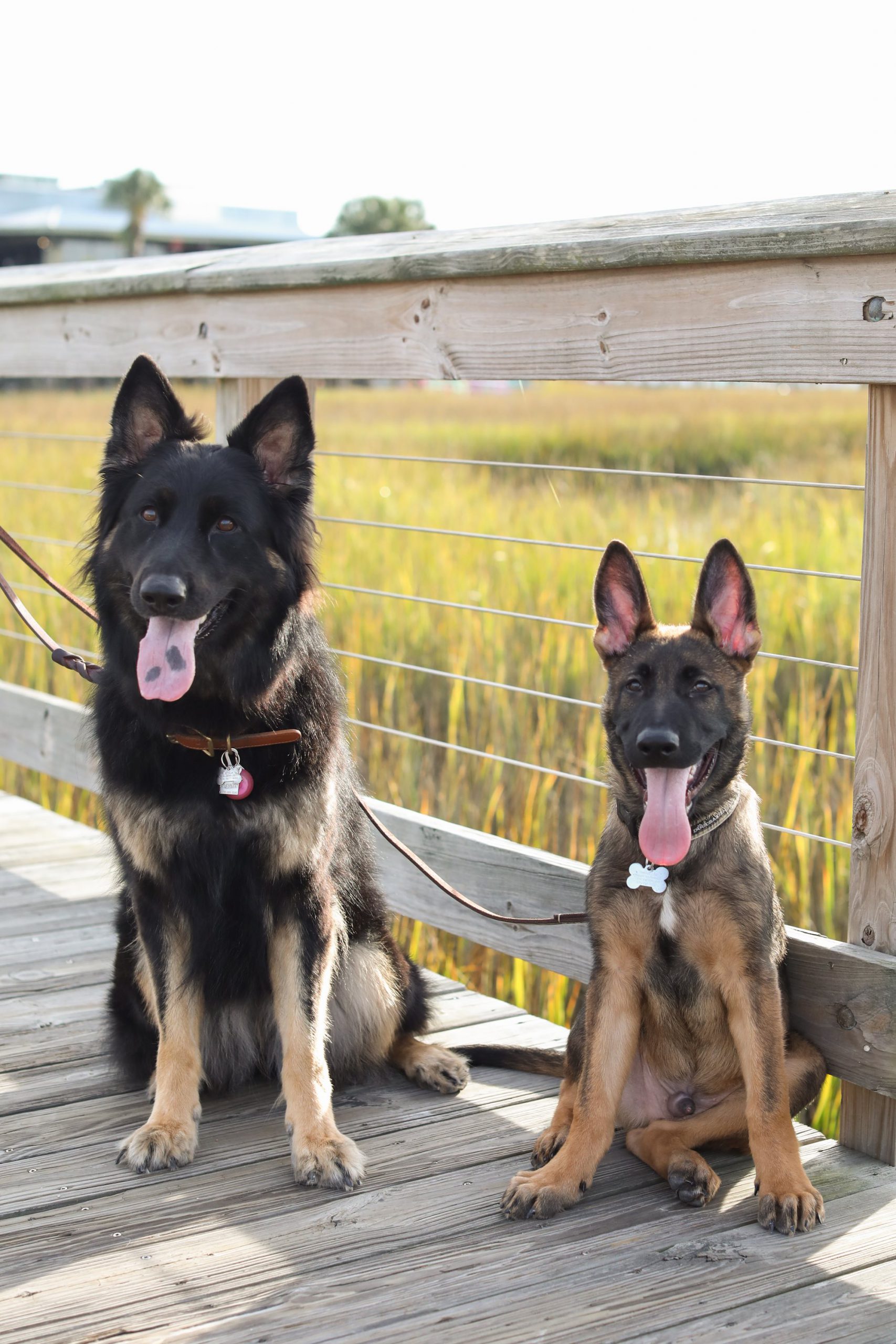
The fine mind comes with a strong body, which some other brainy breeds lack (no offense, papillons). A midsize to large dog, adults weigh 50 to 90 pounds and can measure up to 26 inches tall at the shoulder. Life expectancy ranges from seven to 12 years. They can run up to 30 miles per hour (for comparison, greyhounds can hit 45 mph) and jump as high as six feet (to clear a standard chain-link fence). As with other strong breeds, training is essential to prevent tragic misuses of their force.
“She’s amazingly strong and athletic—she was infamous at the shelter for climbing over their 12-foot fences, and indeed, when we got her home, she made her way out of a room through a transom window in the door (at least eight feet up). She has since stopped trying to climb her way to freedom (after many, many attempts) and is a very loving, very people-friendly dog.” —Stephanie Corn, owner of GSD mix, Evie.
Linked to their smarts is the German shepherd’s famously loyal and protective personality, one reason the breed is a favorite of families.
“GSDs are for people who want to have an all-in familial relationship with their dog,” says Bob Cheslow, who works closely with these dogs as a board member at Westside German Shepherd Rescue in LA. “This is not a breed for people who aren’t able to spend much of their time with their dog, or are not inclined to provide their dog ongoing mental stimulation and interaction with lots of physical activity as well.”
“Ellie is in touch with every member of the household, insanely affectionate, and has instincts that I never realized a dog could possess. She knows who is upset and is wonderful at consoling people. Someone once told me that a German shepherd was a true companion and I never understood that until we had one.” — Holly Centurino, owner of GSD Ellie.
Another quality of a great GSD owner, says Cheslow, is confidence. GSDs will size up a person very quickly, and they will assess whether they are with a confident caretaker. “If your dog senses that you are confident, they will happily follow your lead. If the dog senses that you are indecisive or timid, however, they may come to think that they need to be making all the decisions themselves, and that is not a good thing.” For this reason, Cheslow and other expert emphasize that purebred GSDs are not “beginner dogs.” First-time GSD owners are encouraged to volunteer at a rescue and get to know the breed before adopting. “We also adopt out a lot of mixed-breed German Shepherds, who can display many of the great qualities of the breed but with a little less intensity,” says Cheslow.
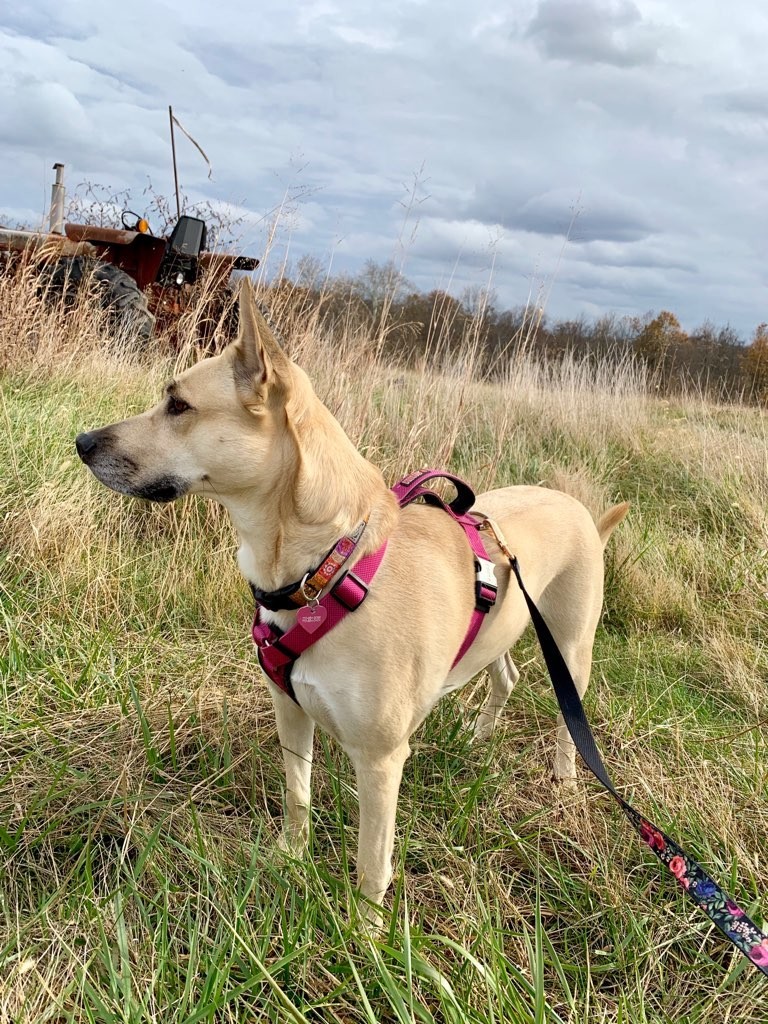
German shepherd breed history
The German shepherd’s story begins in earnest in 1889 at a dog show in Germany, where cavalry officer and dog breeder Max von Stephanitz saw a wolf-like dog of medium size. He admired the dog’s primal canine nature and sporty physique, and especially how adept it was at herding sheep with little to no direction. Von Stephanitz purchased the dog and named him Horand von Grafrath, who is considered the first registered Deutsche Schäferhund, or German shepherd.
From there, the breeder established the first German shepherd club and honed the standard, with his motto “utility and intelligence” always in mind. In 1907, North America welcomed its first German shepherd at a Philadelphia dog show. The start of World War I, and its taint of all things German, stalled the breed’s success in America and England, where it was renamed the Alsatian. Two world wars did, however, demonstrate the German shepherd’s abilities on the battlefield and beyond the farm work for which it was bred. When peace broke out, Hollywood turned Rin Tin Tin and others into international stars—and the breed’s popularity has remained strong ever since.
Healthy lifestyles for German shepherds
Home environment and training
Their wariness around strangers and defensive instincts, coupled with their size, strength, and intelligence, make early and ongoing training essential for German shepherds, and they take to it well. Bred to be herders and working dogs, this dog requires plenty of exercise, social stimulation, and direction. On a fundamental level, German shepherds consider themselves a member of the family, so they should live in the house and participate in daily activities. Socialization in the dog’s early days, notably their first 16 weeks, are critical for healthy behavioral development.
“German shepherd dogs have been bred as general working dogs of high intelligence, and as a result they excel at understanding human beings in a very general and comprehensive way,” says Cheslow. “While a border collie may be brilliant at learning and responding to commands relevant to herding or athletics, a GSD attends to a broad array of cues from people that communicate their intentions, desires, and emotions. The sensitivity that GSDs display to their people can be very intense.”
The benefit of this is the strong sense of bonding, loyalty, and responsiveness owners feel from GSDs; a relationship with this dog can feel very deep and rich. “But their intelligence and intense style of attachment, if not correctly understood and guided, can give rise to behavioral problems,” says Cheslow. “In particular, GSDs are quite prone to separation anxiety and boredom, and can become over-protective of their owners.”
When it comes to training, GSDs respond to confidence and consistency, says Cheslow. Blake Rodriguez, trainer and founder of Dream Come True K9 says trust is key. “They must trust you and also trust in your ability to lead and handle situations so that they don’t become stressed with the need to step up to the plate to attempt to do it themselves.”
“Heinrich is completely toy motivated. In the morning, when he wakes up, he wants to play. He has approximately 108 squeaky toys around the house, and he stages them exactly where he wants them. If you do not play with him immediately, he will throw the toy at your feet, and look at you expectantly. PLAY WITH ME, HUMAN! And we can’t resist that face. So we play. And play. And play.” — Christine Hoaglund, owner of GSD Heinrich.
Two typical puppyhood concerns are especially true for German shepherd puppies: biting and barking. Biting is a normal behavior for a puppy, but it’s a good idea to discourage hard biting now, before it becomes a big problem.
Barking is a direct expression of the German shepherd’s protectiveness of their family and wariness toward intruders. Be sure your pup has ample outlet for mental and physical energy to prevent barking out of frustration.
As mentioned, GSDs require a confident leader, so when it comes to protective barking, it’s important that they know that they can “stand down” and don’t have to be on top of every situation.
As athletic types, German shepherds require regular exercise. An hour a day is a good minimum, but many dogs do well if they have even more exercise, and a chance to engage in some high-intensity activity in addition to walks. Many GSD owners note that their dogs do best when they have a “job” or purpose. Mental exercise is vital for this whip-smart, energetic dog (read more about mental and physical exercise and tips for high-energy dogs here).
Brenda Johnson, owner of GSD mix Sam says her adopted dog has excelled at working with children. “We went to a class so she could do work in hospitals; she needed six weeks of training and she passed with flying colors,” Johnson says. “Sam was so good with kids; she worked at schools for eight years, helping kids with self-esteem. The young children were so surprised that big Sam was so gentle as she looks like a wolf.”
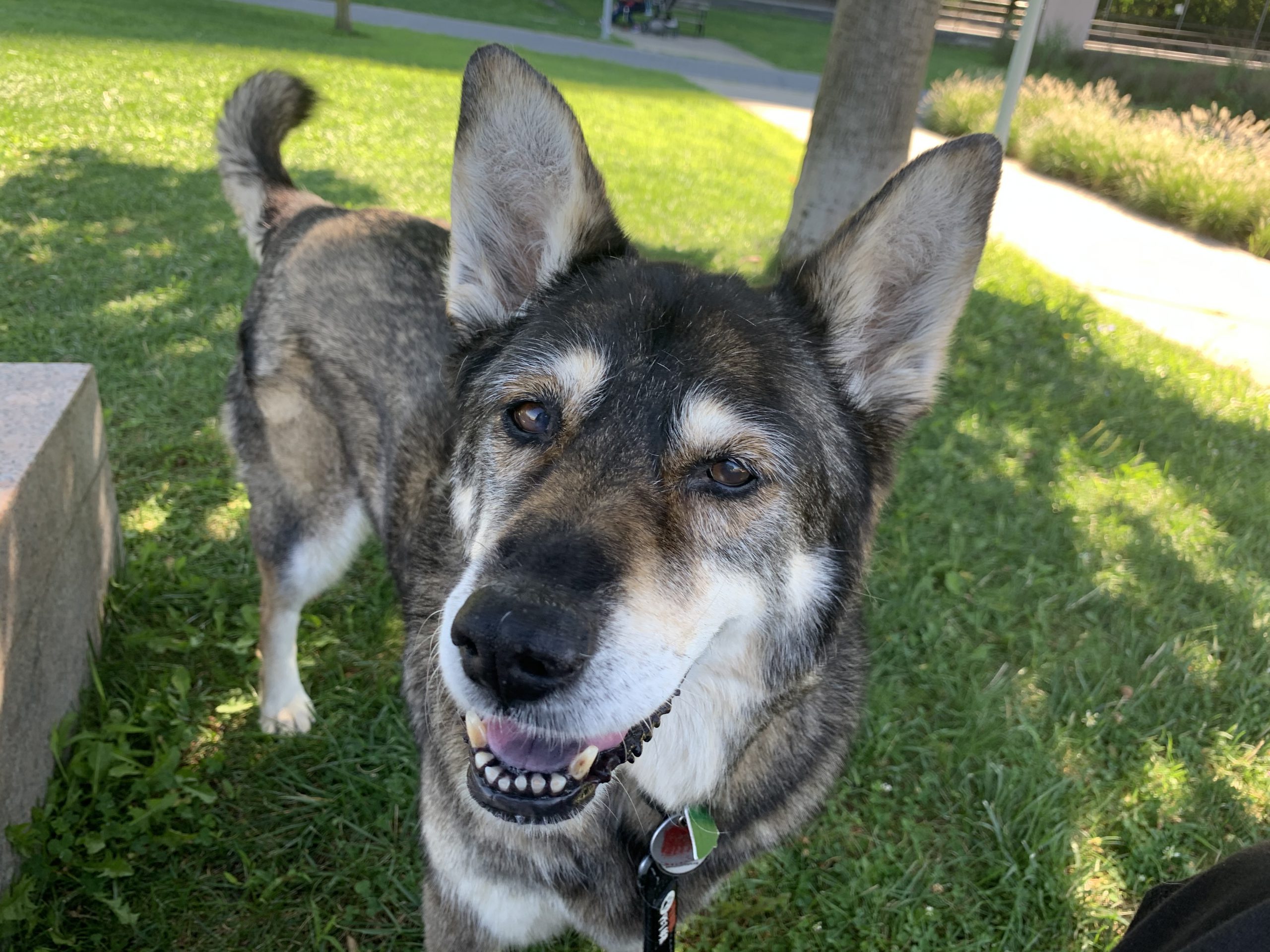
Be sure your GSD gets a chance to run around and demonstrate the elegant gait that enamored original breeder Max von Stephanitz. Be mindful to prevent heat stroke when exercising this thick- and dark-coated pup in hot weather.
And speaking of thick coats, another trait of the breed is heavy shedding—regular vacuuming will be regular exercise for the dog’s human companions.
Health concerns
In addition to typical canine health issues, German shepherds are susceptible to several conditions that afflict the breed specifically. Many mixed-breed dogs “have a little shepherd in them,” which can both reduce the risk of pure-breed problems and introduce them into the mix. These are the main issues:
Bloat/ Gastric dilatation and volvulus: For humans, bloating is usually minor discomfort from overeating. But for a German shepherd, bloat is a dangerous—possibly fatal—health condition commonly found in large, deep-chested breeds. Bloat refers to two, often combined conditions, gastric dilatation and volvulus. Gastric dilatation happens when the stomach becomes distended as it fills with gas. Gastric dilatation and volvulus (GDV), occurs when the gas-filled stomach then rotates or twists on itself, obstructing blood flow. The symptoms can include drooling, retching (without vomiting), a hard or swollen belly, hunching, restlessness, and labored breathing.
A dog with bloat, or suspicion of bloat, requires immediate medical attention. Risk factors for bloat include age, relatives with the condition, and being fed one large meal a day. And while raised bowls have been recommended in the past to prevent bloat, research has also found that they actually increase the risk of bloat.
Treatment often requires gastric decompression, generally with an esophageal tube to release air and fluid, and surgery to restore the stomach’s natural position.
Hip and elbow dysplasia: German shepherds may suffer from this abnormality in their hips or elbows, where the joints can dislocate and wear out, leading to chronic pain and arthritis. It can present as stiffness, difficulty with stairs, and decreased range of motion and activity. Your vet can diagnose, often with X-ray imaging (but may need a CT scan for elbow dysplasia). Although the breed is genetically predisposed to dysplasia, owners can reduce the risk and severity through weight maintenance—maintaining a lean body condition is critical for joint health for every dog—and high-quality food. Treatment ranges from supplements and physical therapy to hip replacement. Ensure young puppies don’t grow too fast (don’t free-feed), or over-exercise—restrict running and jumping on hard surfaces and other activities that create high impact on the joints.
Degenerative myelopathy: German shepherds are among a number of dog breeds with genetic risk of this progressive spinal condition, often likened to human amyotrophic lateral sclerosis, or ALS. Degenerative myelopathy usually strikes dogs in middle-age and older with early symptoms such as loss of hind-leg coordination.
Pancreatic enzyme insufficiency: This condition, also called exocrine pancreatic insufficiency, is found in other animals, including humans, but is most frequent in young adult German shepherds. In short, damage to the pancreas makes it difficult for the breed to absorb nutrients from food. Even if your German shepherd is a voracious eater, and seemingly getting enough to eat, they may exhibit symptoms associated with malnutrition: diarrhea, dry and flaky skin, and weight loss. After a vet’s diagnosis, pancreatic enzyme insufficiency is often treated successfully with medication, specifically a powder with pancreatic enzymes.
Eosinophilic panosteitis: Sudden, otherwise unexplained lameness of one of more legs in a growing German shepherd could indicate this condition, nicknamed “pano” or growing pains. Call your vet at the onset of symptoms, but rest easier knowing that puppies and young dogs tend to grow out of pano naturally. It typically strikes the humerus, or upper part of the front leg, but can also affect other large bones of the front and rear legs. The bone is painful to the touch, though the exact reasons remain unclear, and treatment options include analgesics or anti-inflammatories, plus only light exercise, until the condition resolves itself.
Food allergies and sensitivities: A food allergy, or hypersensitivity, flares up when the dog’s body overreacts to a dietary protein, often in a specific meat or carbohydrate. A frequently upset stomach or symptoms such as itchy skin could indicate disagreeable ingredients in a dog’s diet. Vets often recommend a strict elimination diet to help identify nutritional triggers. Since they are more prone to food allergies and sensitivities than other breeds, GSDs can benefit from a fresh, high-quality diet, which makes it easy to know exactly what you’re feeding. Be sure to ask your vet to rule out digestive or pancreatic disorders before focusing entirely on allergies.
Other genetically linked conditions with higher incident rates in German shepherds include inflammation around the anal gland (perianal fistula), the bleeding disorder hemophilia A, epilepsy and seizure disorders, and certain eye problem, notably pannus, an autoimmune disorder that affects the cornea. Your veterinarian can help screen and monitor for conditions common to the German shepherd breed.
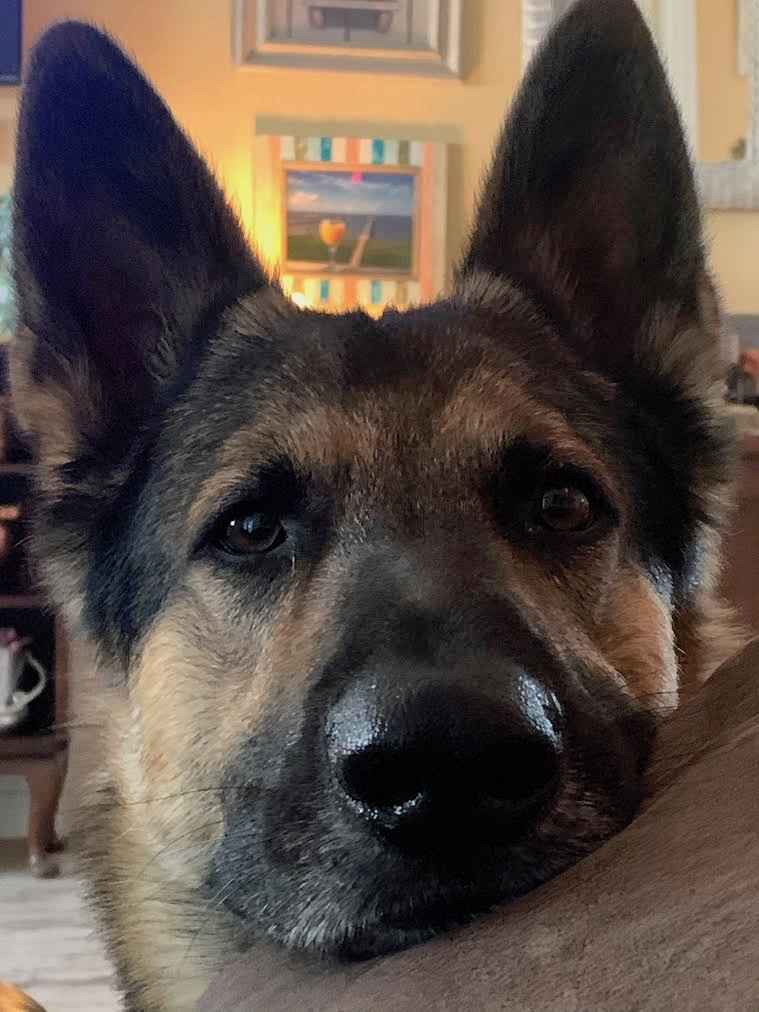
Food and nutrition for German shepherds
As with humans, a dog’s health and exercise habits work in tandem with diet. German shepherds are big, muscular dogs with elevated risk of digestion problems, and hence they do best on a high-quality, fresh diet that supports their athletic activity and is free of problematic (or unknown) ingredients.
Some special considerations for feeding your German shepherd:
Feed twice a day. Though feeding once a day has many benefits, one big meal elevates the risk of bloat. Consider a slow feeder.
High-protein diets are popular among human athletes, but for dogs, such specialty diet options are generally not necessary. What’s most important is a well-balanced diet that delivers the appropriate ratio of protein, fat, and fiber in the form of real, fresh food.
Maintain a lean, healthy weight. Weight maintenance is one of the most accessible, but impactful, things you can do for your pup, especially one predisposed to joint issues.
For GSDs with dry and itchy skin, sensitive stomachs, or other signs of food allergies and sensitivities, it’s important to know exactly what you’re feeding, something that can be impossible with kibble, which often contains ingredients not listed on the bag. Allergic reactions and intolerances to food are fairly common in dogs and many people notice symptoms clear up when they switch to fresh food.
“This dog was a very picky eater. He would not eat any type of dog food. We were going to Sam’s and buying 80 hamburger patties per week and cooking them. He then stopped that and we would have to buy whole chickens. I was concerned because he wasn’t getting anything but meat. I discovered The Farmer’s Dog and thought I’d give it a try. This is the only ‘dog’ food that he will eat. I’m happy knowing he’s getting the right nutrition now. He’s a healthy, rambunctious, very vocal dog now!” —Mark Gilbow, owner of GSD Taser.
If you’re looking for pre-portioned, healthy meals, tailored to your German shepherd’s age, size, activity level, and weight, consider signing up for a fresh food plan. A plan tailored to your smart shepherd will take the guesswork out of portion management, and ensure you’re providing all the necessary nutrients, in the right balance. A healthy diet is the best way to support your GSD’s health and happiness — along with training, regular vet care, love, and a giant collection of super-tough toys, of course.
If a German Shepherd sounds like the perfect loyal companion for you, consider adopting from a local GSD rescue or animal shelter (a GSD mix could be the ideal option). If you’re in the LA area, check out the adoptable dogs West Side German Shepherd Rescue has on its site.
Top photo by Enrico Tavian on Unsplash.
